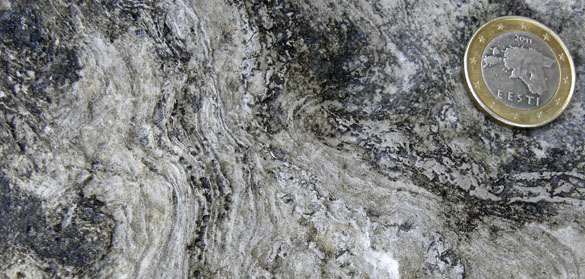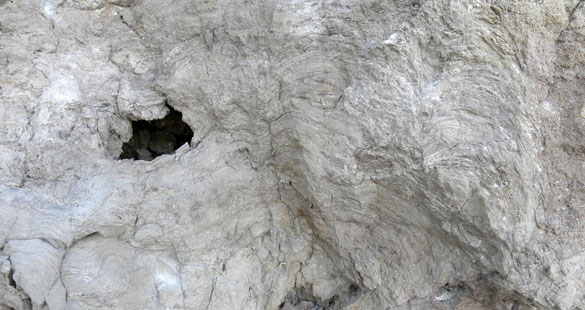 KURESSAARE, ESTONIA–Our fieldwork today at the Soeginina Cliff locality ended with an examination of a sequence of stromatolites near the top of the exposed Ludlow section. Stromatolites are layers of sediment accumulated by photosynthetic cyanobacteria. They are the earliest fossils known, some 3.5 billion years old, and these structures are still being formed today. Bacteria were present at the beginning and no doubt will be the only surviving life at the end.
KURESSAARE, ESTONIA–Our fieldwork today at the Soeginina Cliff locality ended with an examination of a sequence of stromatolites near the top of the exposed Ludlow section. Stromatolites are layers of sediment accumulated by photosynthetic cyanobacteria. They are the earliest fossils known, some 3.5 billion years old, and these structures are still being formed today. Bacteria were present at the beginning and no doubt will be the only surviving life at the end.
In the image above, the stromatolitic portion of the outcrop begins at Nick’s upraised arm and goes almost to the top of the exposure. It is a complicated story because they seem to be sitting on an erosional surface cut into the dolomite underneath. There are also patches of what appears to be gravel under some of the stromatolite domes. A dolomitic sand fills the spaces between the stromatolite heads. Stromatolites can tell us a lot about the paleoenvironment of this area during the Silurian.

Top view of the Soeginina stromatolites showing the fine layering produced by cyanobacteria. (Note the clever use for scale of a Euro with the map of Estonia on it. You can easily pick out the island of Saaremaa!)
I don’t usually come across stromatolites in my work. The last time I saw a few was with Matthew James on a great field trip to British Columbia. Part of the joy of supervising student research is that I must learn alongside them!



